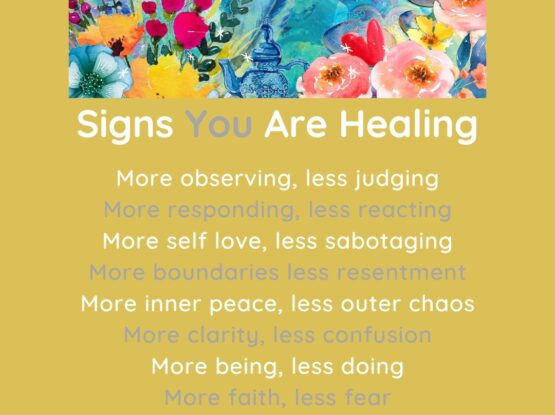Compassionate Letter Writing
Could you develop greater kindness and compassion for yourself and others. Compassionate thoughts and behaviours can help us calm down. Just like a mother soothes her baby’s distress with care and love. We can learn how to soothe distressing emotions with self compassion. Studies show practicing compassion increases in feelings of contentment and well-being.
In this article we will discuss ways to write compassionate letters to ourselves and consider the benefits. The following is mostly extracted from Paul Gilbert’s work.

We are invited to write about our difficulties, most importantly we will write from the perspective of the compassionate part of ourselves.
Your Compassionate Letter
There are different ways you can write this letter. The first technique is to take your pen and paper and then spend some moments engaged with a soothing breathing rhythm. Next, think about your compassionate self; remembering you at your best – at your calmest, at your wisest – when you are most caring. Imagine yourself as you would ideally like to be- in terms of being mature and powerfully compassionate. Try to feel or embody your compassionate self.
As you focus, feel yourself expanding slightly and feeling stronger. Imagine you are a compassionate person who is wise, kind, warm and understanding. Consider your general manner, tone of voice, and the feelings that come with your ‘caring compassionate self.’
Adopt a kind facial expression. Try to feel the kindness in your face before moving on. Think about the qualities you would like your compassionate self to have. Spend time feeling and gently exploring what those qualities are like when you focus on them. Remember, it does not matter if you don’t actually feel you are like this. Simply focus on the ideal you would like to be. It is your intentions that are important – feelings may follow with practice.
Spend at least one minute, longer if possible, thinking about those parts of yourself. Don’t worry if this is difficult, just do the best you can – have a go.
When we are in a compassionate frame of mind (even just slightly), or in a pattern of trying to help a friend or someone we care for, we try to use our personal experiences of life wisely.
We know that life can be hard; we offer our strength and support; we try to be warm and not judgmental or condemning.
The point of these letters is not just to focus on difficult feelings but to help you reflect on your feelings and thoughts. Be open with them, and develop a compassionate and balanced way of working with them.
Focus on a few deep breaths and try to sense and feel that wise, understanding, compassionate part of you arise in you. This is the part of you that will write the letter.
Now we try to write the letter from this compassionate point of view. If thoughts of ‘am I doing it right?’ or ‘I can’t get much feeling here’ arise, just note or observe these thoughts as normal comments our minds like to make, but re-focus your attention and simply observe what happens as you write, as best you can.
There is no right or wrong way, only the effort of trying – it is the practice that helps. As you write, try to create as much emotional warmth and understanding as you can. You are practicing writing these letters from your compassionate side.
As you write your letter, try to allow yourself to understand and accept your distress. For example, your letter might start with: ‘I am sad. I feel distressed; my distress is understandable because…’
Note the reasons. Realising your distress makes sense. Then, perhaps you could continue with understanding and write: ‘I would like me to know that…’
Your letter might point out that as we become stressed or depressed, we can create a powerful set of thoughts and feelings – so how you see things right now may be the depression view on things. Given this, we can try and step to the side of the distress and write and focus on how best to cope. So we can offer helpful suggestions to ourselves and write: ‘It might be helpful to consider…’
Compassionate Images
A second way of doing this is to imagine your compassionate self image and see that part writing to you, imagining a dialogue with them, and what they will say to you. So, for example, my compassionate self image might say something like:
‘Hiya, the last few days have been tough. Isn’t it typical of life that problems arrive in groups rather than individually? It’s understandable why you’re feeling a bit down because of… Hang in there because you are good at seeing these as the ups and downs of life. There have been times before when things have seemed dark but they pass. You have shown lots of courage and developed abilities for getting through this and tolerating the painful things.’
 Note how this letter points to my strengths and my abilities. It doesn’t issue instructions such as: ‘You must see these things as the ups and downs of life’. This is important in compassionate writing. You don’t want your compassionate letters to seem as if they are written by some smarty pants, who is giving you lots of advice. There has to be a real appreciation for your suffering, your struggle and your efforts at getting through. Compassion comes like a kind arm around your shoulders, as well as re-focusing your attention on what is helpful for you.
Note how this letter points to my strengths and my abilities. It doesn’t issue instructions such as: ‘You must see these things as the ups and downs of life’. This is important in compassionate writing. You don’t want your compassionate letters to seem as if they are written by some smarty pants, who is giving you lots of advice. There has to be a real appreciation for your suffering, your struggle and your efforts at getting through. Compassion comes like a kind arm around your shoulders, as well as re-focusing your attention on what is helpful for you.
Good Morning
About writing letters to yourself, let’s note an important point. Notice if you are more comfortable writing ‘you’ rather than ‘I’. Some people prefer to write their letters as if writing to someone else. See what works for you, but over time try to use ‘I’.
When you read this letter substitute ‘I / me’ for ‘you’, notice the difference:
‘Good morning dear friend, (insert your name)
The last few days have been tough for you so no wonder you want to hide away in bed. Sometimes we just get to the point of shutdown, don’t we, and the thought of taking on things is overwhelming. You know you have been trying real hard but have felt exhausted through no fault of your own. I guess the thing now is to work out what helps you. You’ve shown a lot of courage in the past in pushing yourself to do things that you find difficult. Lie in bed if you think that it can help you, of course, but watch out for your critical side. Also remember you often feel better if you get up, tough as it is. What about a cup of tea? You often like that first cup of tea. Okay, so let’s get up, move around a bit and get going and then see how we feel. Tough, but let’s try . . .’
 The main point with this style of letter / communication is the focus on expressing empathy & understanding. The author is also being helpful, having a really caring focus, but at the same time working on what we need to do to help ourselves. You might write this one in your head – imagine a really kind and understanding part talking with you. At other times it is useful to actually use a pen and paper and write to yourself.
The main point with this style of letter / communication is the focus on expressing empathy & understanding. The author is also being helpful, having a really caring focus, but at the same time working on what we need to do to help ourselves. You might write this one in your head – imagine a really kind and understanding part talking with you. At other times it is useful to actually use a pen and paper and write to yourself.
It is not the advice you need, but the support to act on it
Guides to letter writing
When you have written your first few compassionate letters, go through them with an open mind and think whether they actually capture compassion for you. If they do, then see if you can spot the following qualities in your letter.
- expresses concern and genuine caring.
- is sensitive to your distress and needs.
- is sympathetic and responds emotionally to your distress.
- helps you to face your feelings and become more tolerant of them.
- helps you become more understanding and reflective of your feelings, difficulties and dilemmas.
- non-judgmental/non-condemning.
- a genuine sense of warmth, understanding and caring permeates the whole letter.
- helps you think about the behaviour you may need to adopt in order to get better
You might want to share your letters with your counsellor for further support in developing your self compassion.
Self-critical people may struggle. Paul Gilbert observes they are not very good at writing compassionate letters. Their letters tend to be rather full of finger-wagging advice. You may have to work at this and practice. The point of these letters is not just to focus on difficult feelings but to help you reflect on your feelings and thoughts, be open with them, and develop a compassionate and balanced way of working with them. The letters should not offer advice or tell you what you should or shouldn’t do. It is not the advice you need, but the support to act on it.
Letters and ideas extracted from Compassionate Mind Foundation 2010 p 81-83
https://compassionatemind.co.uk/about-us
By Jane Macnaught
Subscribe For More
 Jane Macnaught
Jane Macnaught
E: counsellor@tranquilloplace.com M: +61 425 152 490
Learn More About Jane
Tranquillo Place: Counselling | Mediation | Relationships
We offer private services in our beautiful tranquil room in Mona Vale, Northern Beaches Sydney and online using secure, encrypted Zoom.
Specialists in trauma, anxiety, grief & loss, communication, intimate relationships, compassionate mediation, couples coaching, online courses & training, workshops, and trauma informed practitioner support group.
Talk to us. We would like to hear what’s happening in your life and help you find the right support.
Book a Free Session
Disclaimer: Tranquillo Place makes every effort to provide readers of our website, blogs and newsletters with information which is accurate and helpful. It is not however a substitute for counselling or professional advice. While all attempts have been made to verify all information provided, Tranquillo Place cannot guarantee and does not assume any responsibility for currency, errors, omissions or contrary interpretation of the information provided.
*Please note that this blog post is for informational and educational purposes only. It is not an endorsement of the books. We have created links to the Australian owned online bookstore BOOKTOPIA, and if you purchase with these links the website owner Tranquillo Place will be paid a nominal affiliate fee. We hope you enjoy reading these books.



